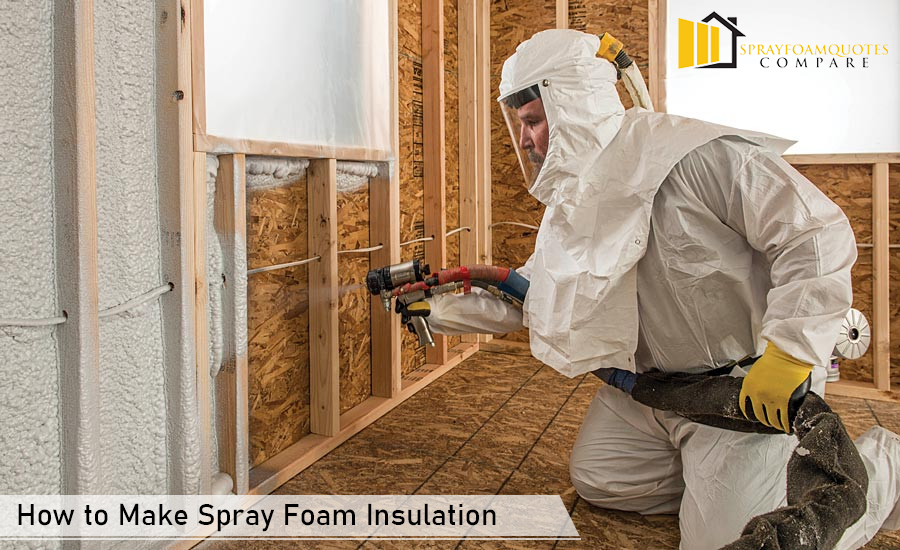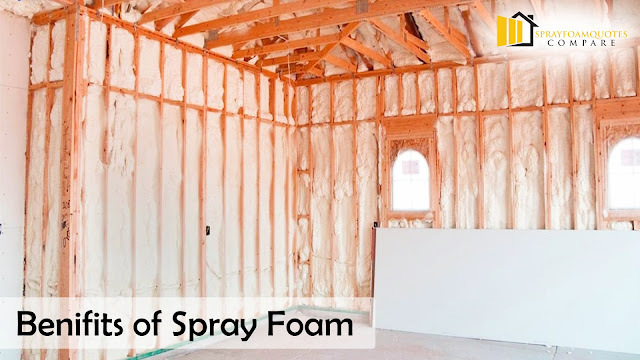Best Spray Foam Insulation Tips You Will Read This Year
Spray foam insulation serves multiple purposes: it is an airtight shield, has a high R-value, and increases structural strength where it is installed.
Spray foam is the greatest solution for homeowners who want to improve their home's thermal efficiency and save dollars in the long run.
Because of its numerous benefits, spray foam insulation has become the most ubiquitous insulation material.
Also, it may be the solution you're looking for if you want your house to keep its value for years, stay safe from water damage, and make the interior walls more solid.
Keep reading for the definitive spray foam insulation tips to help you determine if it's perfect for you.
Apprise us of your detailed information at Spray Foam
Quotes Compare to obtain your personalised Quotations from our partnered
contractors.
Beneficial Spray Foam Insulation
Suggestions
Spray foam installation can be hazardous, especially
if accomplished incorrectly. It necessitates specialised equipment, extensive
training, and experience. Crucial tips include:
● To conduct a good job, you
should contact qualified and approved spray foam insulation contractors.
● You'd think that what sort of
spray foam would be adequate for all of your requirements?
● Normally, one kind is
sufficient, but be aware that there are certain unique varieties available.
● You can also prefer to choose
between open-cell versus closed-cell foam insulation options.
● Spray foam, notably the
closed-cell variety, is a costly material. It is the most costly technique for
insulating a home.
● But open-cell foam insulation
rapidly extends in place, therefore the insulating covering it provides is
significantly greater.
● Make sure that the region
where the foam insulation will be poured is neat and tidy. This will make the
immediate work area easier to navigate by installers and start the procedure
immediately with their equipment.
● Each foam spray performs best
at slightly varying temperatures. For specific temperature instructions,
contact the spray foam manufacturer.
● If performing DIY, protect
your lungs with a respirator, and be sure to wear a full protective suit,
chemical-resistant gloves and wrap-around goggles.
● Spraying should be safe if
the surface you're spraying hasn't been subjected to water in a few weeks.
● However, if you're mending a
wall that has just suffered water damage or was recently erected with new, wet
timber, you should verify the moisture content before spraying.
● Shake the cans before
starting to mix the contents with your hands, and then shake once or twice
after that.
● Seal all of the switches and
sockets with masking tape to avoid filling them with foam.
● Uncured foam has a lower
R-value. Failure to wait for lifts to
dry and spraying lifts that are overly thick are the two most typical spray
foam installation problems.
● It's an excellent decision to
leave the construction for a few days to allow the foam to cure. While cured
insulation does not off-gas, the substances used to produce the foam can be
somewhat bothersome to be around while wet.
Conclusion
Homeowners who choose spray foam insulation may have difficulty determining which type is ideal for their home. Alternatively, they can choose between doing the job themselves and hiring installers.
Finally, closed-cell spray foam is the superior choice. It is physically stronger and better at insulating a space.
It also provides an efficient vapour barrier, which eliminates the need for the homeowner to add one after the foam has dried.
However, it is costly and open cell foam is less expensive and a better insulator.
When deciding between DIY and professional installation, homeowners should evaluate if they want to deal with the mess and combination.
Those who have the time and skills to apply their own
spray foam can opt for it. However, if you need the task done quickly and
successfully, it is advisable to hire experts like Spray Foam Quotes Compareinstallers.




Comments
Post a Comment